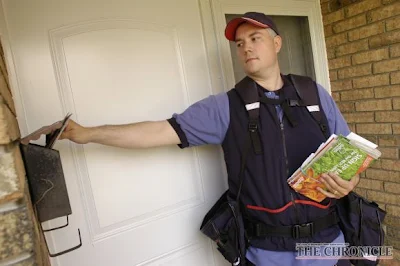The Truth About the Area Code 809 Hoax and Scams
Brief Summary: There is no evidence* that anyone falling for the '809 scam' ever complained about their phone bill, or paid more than standard international rates*.
Full Summary: In early October 1996, someone sent out spam* that tricked people into calling an 809 (Dominican Republic) phone number, and the callers were likely billed about $.50/minute *. About a week later, an organization called ScamBusters got a hold of this information, and reported* (incorrectly) that it could cost up to $25/minute and $100+ total. People passed this information on through chain letters, where $25 and $100 got turned into $2,425 and $24,100 (due to encoding and human error*). Everyone from the BBB to Attorneys General got duped*, thinking something barely worthy of the term 'scam'* was a huge deal. There is no evidence* of anyone ever having complained about their phone bill from this! The hoax, on the other hand, causes huge problems*. click here to see more.
Unraveling the Hoax and Proving it
Despite hundreds of newspaper articles, warnings by police, sheriffs, district attorneys, attorneys general, colleges and universities, there is one lynchpin that keeps this whole thing alive: that it might have cost $25/minute to call these numbers (which then snowballs into the higher figures). The prospect of getting charged $25/minute is scary (and worthy of informing others of); getting charged $.25/minute* is not. If that $25/minute can be disproven, the whole thing can be shown to be a hoax, since all the warnings mention amounts of money that are based on the $25/minute rate.The truth is that there is just one source for that $25/minute amount: The original ScamBusters article, which said "apparently be charged $25 per-minute." Their alert went out on 07 Oct 1996, 5 days after the scam started, so nobody had gotten a phone bill yet. Their alert was based on reports from 2 people, and quoted no sources for any of their information. Five days later, they issued a new alert, mentioning "reportedly up to $25 per minute." So their story changed from a flat rate per call to a variable rate.
On 21 Nov 1996 (6 weeks after the scam started), Eric Zorn of the Chicago Tribune said that the $25 figure was a 'wild error', and that you are billed standard international rates. The truth is that it cost people about $.50/minute to make the call back in 1996. On 12 Jan 1997, an intelligent Usenet poster claims that he for 6 months requested that anyone with proof of 809 calls cost more than the normal international rate to let him know; nobody responded. We also sent an E-mail to the one of the authors of the original ScamBusters article, asking if he had any evidence that anyone ever paid more than the standard international rate. No response. A reputable website has requested evidence of surchages for 8 years, with no takers.
So it seems very clear that the $25/minute that all the hoaxes are based on was completely made-up, most likely to try to get people to hype the ScamBusters article. A good job they did!
If you really want to report on the scam
Let's say that you want to report about the scam behind the hoax. You feel that your citizens/constituents/students/whatever need to know. That's OK. While we feel that it isn't worthy of reporting, you may. However, please at least consider these guidelines if you do report it:
- Do NOT just mention area code 809. Mention all area codes that could result in international long distance rates.
- Do NOT mention any specific information without backing it up. e.g. do not say 'Calls can cost as much as $25/minute'.
- Do NOT mention vague information that cannot be backed up ('This is spreading rapidly', 'Lots of people have been victims', 'high phone bill', etc.).
- Do NOT imply that this is 'pay-per-call' or that extra charges, surcharges, or fees apply beyond long distance rates.
- DO make it clear that people falling for the scam will just pay standard international rates of about $.25/minute.
- DO make it clear that there is absolutely no reason not to call people or businesses you know in any country (assuming you know what the standard rate is)
- DO distinguish between the scam in the chain letters (where someone cons you into calling an 809 number, and there is no benefit to the call) from the 'quasi-legitimate' scams such as Mystery Shopping ads that would appear in newspapers, where people actually did get information they wanted (but complained for various reasons). They are very different scams.
Boos to:
- AT&T - They get a ton of free publicity from the hoax, as many people use their page to 'prove' that the hoax is real. They do admit that the costs are highly exaggerated (but still claims there are 'high charges'). They don't admit that court documents (see p110) show that AT&T received 90% of the money for the printed version of the '809 scam'. Update the page to make sure that people can't accidentally use it as 'proof' that the chain letter is real.
- ScamBusters - They've gotten a ton of free publicity from the hoax that they helped start! Their page is still used as 'proof' that the hoax is real. They still suggest that the $25/minute rate they made up might be accurate. Just admit that there is no evidence that anyone ever paid huge sums of money, accept that you got tons of free publicity for 13 years, and be done with it.
- FCC - They are sometimes used as 'proof' of the hoax. They need to revise their article, removing the hoax pieces, and making sure people aren't going to accidentally use it as 'proof' that their chain letter is real.
- BBB - They are sometimes used as 'proof' of the hoax. They need to revise their article, removing the hoax pieces, and making sure people aren't going to accidentally use it as 'proof' that their chain letter is real.
- Snopes - This is usually an excellent resource. However, the hoax (showing $2,425/minute) points to their site 'proving' it is real, since they state 'Mixture of true and false information', 'pay-per-call', 'hefty up-front fee', '$25 to $100'. People see that, and the hoax continues (sometimes with modifications, sometimes not). If you're a hoax-busting site like Snopes, and you have a hoax that links to a webpage of yours to 'prove' the hoax is real, that page must make it very clear that it is a hoax, and be completely accurate. If Snopes thinks that people might be billed $100 for this, they haven't done enough research.
Specifics...
In 1996 it only cost about $.50/minute to call the 809 area code
Evidence from Usenet postings shows that in this time a good deal for international rate calling to the 809 area code was $.50/minute.For example: $.46/minute (soc.culture.dominican-rep 23 May 1996), $.46/minute (biz.marketplace.non-computer 14 Oct 1996), $.47/minute (ca.forsale 27 Aug 1997), $.52/minute (biz.marketplace.services.non-computer 07 Nov 1996), $.52/minute (soc.culture.hongkong, 26 Nov 1996).
In 2009 it costs about $.25/minute to call the 809 area code
Today, there are typically 2 different international rates: one for normal calls, the other for mobile calls or premium services. Here is what you can expect to pay as of 23 Oct 2009 (all are for 'premium services' calls): AT&T: $.24/minute (U-verse International Calling).
Charter: $.25/minute
Qwest: $.25 (using Broadband Phone Service)
Verizon: $.18 to $.47/minute
These scams are rare today
First, there's the fact that there are very, very few reports of anyone having ever fallen for this scam (and none include a dollar amount).Then, there's Ask Andy. He says that he helped investigate this in 1998, and he is not aware of any such scam since then (as of the report, dated 13 Mar 2009).
The only reports we could find were: [1] Per that Ask Andy article, there were about a dozen people targeted in North Mississipi in or before 1998, and [2] A college student that reported it to the campus police (after he called, before he got the bill; he only reported it because he saw an article suggesting he might be paying a high rate), [3] The Missouri Attorney General says that a senior citizen got the message and called, but doesn't remember if he got an extra charge on his phone bill.
Did you know if you want to see more proof click here.
















